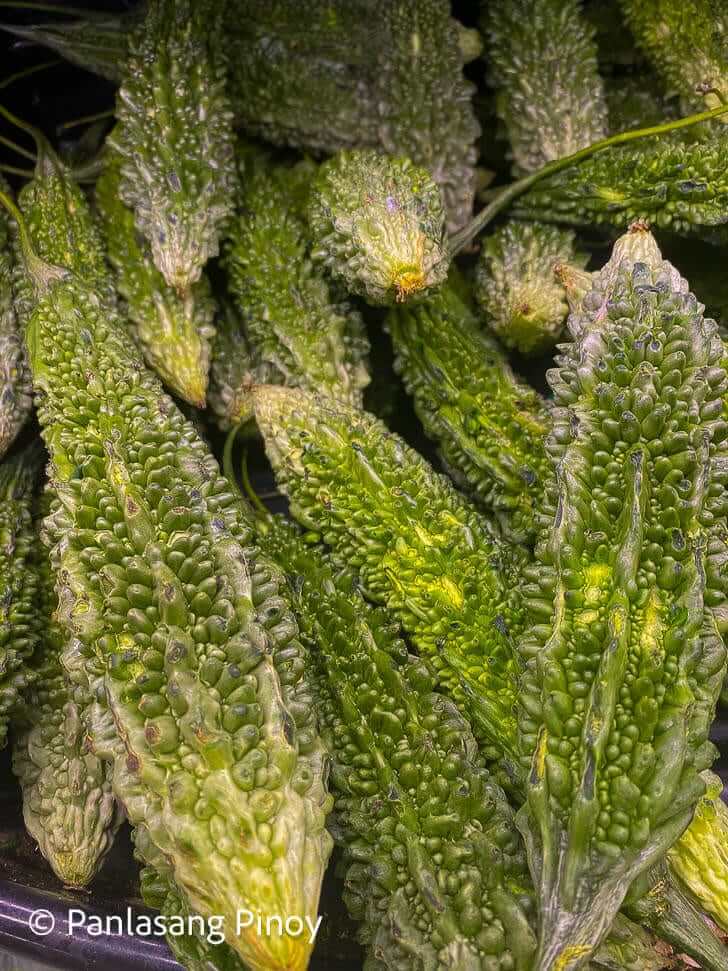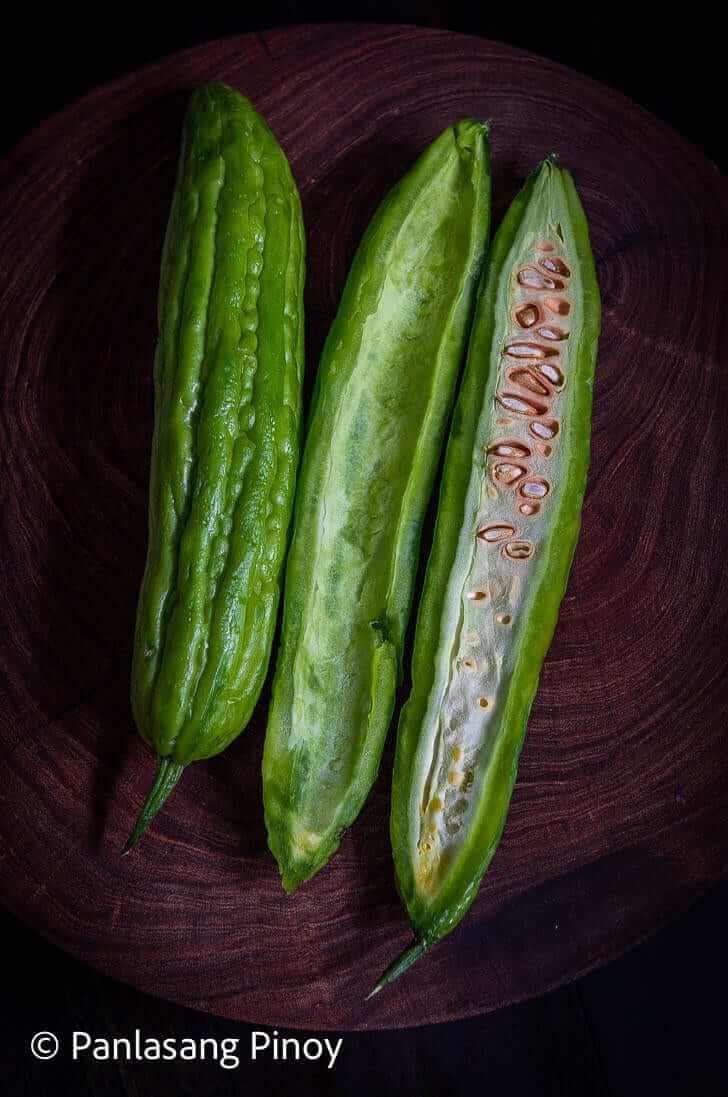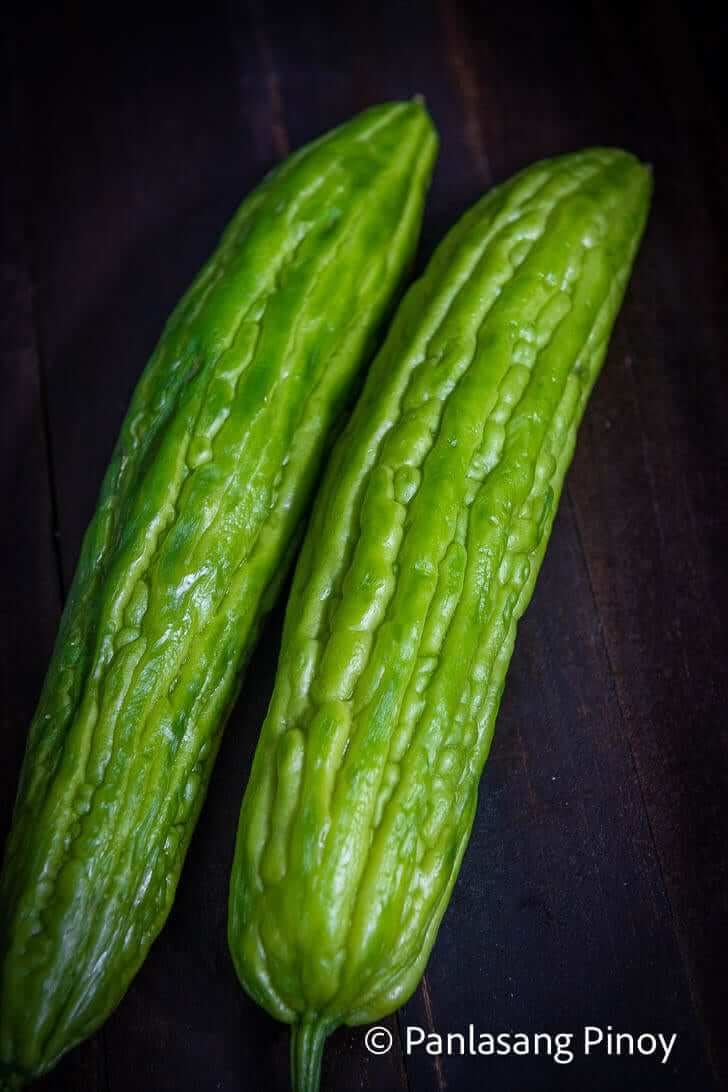Ampalaya
There is a great deal of ingredients and food items that go down in history for their infamy. And majority of the time, you can find this applies to healthy ingredients that may not necessarily bring immediate pleasure to the taste buds of some. But the magic, perhaps, comes from the seamless integration of these notorious ingredients with complementary spices and foods. This may just be why, in the Philippines, the bitter gourd, better known as ampalaya, is one of the most famous and well-used vegetables.

While the ampalaya’s signature trait may be its sometimes overwhelming bitterness, with the right set of ingredients, its taste can truly shine.
What is ampalaya?
Bitter gourd, with the scientific name of Momordica charantia, is a tropical and subtropical vine. It is often grown in the Carribean, the Amazon, and Southeast Asia. Because of its abundance in the Philippines and some surrounding countries, various savory recipes make the most of its signature bitter flavor. This comes from the momordicin in the vegetable.
As you can see in its name– it is sometimes referred to as bitter melon too– ampalaya is known for its distinctive bitterness. And it isn’t entirely uncommon for diners to reject a strong acrid taste. Some detest even the mildest trace of bitterness. But even for those who are not entirely opposed to its distinct flavor, balancing its taste with other ingredients can be tricky. With such sharp flavor, it can be hard to prepare a dish without it overpowering the entire meal’s taste.
But several Filipino cooks have learned to innovate, and slowly learn to master this vegetable. And I have a list of some tricks you could also adopt to cook your ampalaya better!
How to cook with ampalaya and get rid of some of its bitterness:
Making use of the bitter melon evidently involves some preparation beforehand. You can start by slicing it open vertically along the length. Then take a spoon, and scrape out all of the sides, as well as the white pith. This white is where you could taste most of the acridity. And so take it out as much as you can. What you will essentially be left with is the green gourd you’ll be needing for most dishes. Majority of the time, the preferred size is in ¼-inch pieces that are shaped like a half moon. Try to slice it in this manner.
The next part is a step that could heavily improve your dish, depending on your preference of bitterness. But if you’d like a much milder sense of acridity, one way to remove some bitterness is by rubbing 1 teaspoon of salt inside the ampalaya. Make sure to apply this step to both halves of your bitter melon, then wait for 5 minutes. Then you might be able to see some moisture, and that the bitter sap has exited from your ampalaya.

Other techniques to lessen acridity:
There are other steps you could adopt for a similar effect. You could do well by slicing up your ampalaya in pieces in the half moon shape for your starting step. Then put them in a bowl. Rinse this well with water, then dry your sliced bitter gourd. This easy step could still remove plenty of what could be an unpleasant flavor to some.
Another option also utilizes the rinsing method, but with some more time in the bowl of water. Try this with salted, lukewarm water to contrast the ampalaya’s acridity. Take note that more time soaking the vegetable would mean less of its natural bitter flavor. With this, you can soak this from a minimum of 5 minutes to overnight. Then you are likely to wake up with only some mild bitterness left to your ampalaya.
Another tip to make sure that the ampalaya does not end up too bitter is by ensuring that you cook it just the right amount. Spending too much time above heat and a stove could bring out even more of the bitterness you might be avoiding for the ampalaya. Keep a watchful eye while cooking your rich, flavorful bitter gourd.
Choosing and storing your bitter gourd:
Another factor you should look at to ensure less of a bitter ampalaya is its ripeness. If it is unripe, it tends to be less bitter, and it is bright green and firm. When you stroll around the markets looking for your supply of bitter melon, keep an eye out for these kinds of ampalaya. This is because milder bitterness is ideal for most dishes. And on the other hand, you probably should try to keep away from bitter gourd that leans towards a more orange or red shade. This indicates a more ripe ampalaya with more bitterness.
Now if you want to keep your ampalaya from ripening, you can keep it in the fridge for approximately 4 days. This can slow down the ripening process, while keeping your vegetable from rotting.
It might seem like a bit much to be preparing this vegetable. This is especially given how it can usually be an unideal amount of bitter to the taste. But a little patience in cooking this nutritious ingredient could lead to a great deal of health benefits in the future!
Health benefits that come with eating ampalaya:
Filipinos have mixed this vegetable with a great amount of dishes, and this should come as no surprise. Because of the abundance of vegetables grown all over the country, it is a fairly accessible and low-cost way to boost your health. Ampalaya has 22 percent of the average daily requirement for folate or folic acid in its synthetic form. With this, the Harvard School of Public Health has said that increasing your intake of the bitter gourd can help prevent breast cancer, colon cancer and strokes.

But the advantages of incorporating this ingredient in your diet don’t stop here. It is also rich in dietary fiber. This means it could be beneficial in maintaining your gastrointestinal health, while protecting you from diabetes and heart disease.
And a lesser known fact about ampalaya is that one piece of this winkly vegetable is said to have 174 percent of the average daily requirement for Vitamin C. And Vitamin C, a great antioxidant, can help you make great strides towards protecting your cells from harmful free radicals.
Of course, if you are looking to improve your eating habits in consuming less calories, ampalaya also makes for a fantastic, piquant option. It has a lower amount of calories than most other ingredients. And this is while retaining some of the most helpful vitamins and nutrients. Other than folate and Vitamin C, the bitter melon also contains Vitamins B1, B2, and B3. Moreover, it is rich in manganese, phosphorus, zinc and iron. As such, iron can aid your body’s process of making more hemoglobin, which is great for your blood health.
Its health benefits compared to other food:
Ampalaya is also able to more than hold itself with pride when compared to other healthy food options. For one, it has twice the amount of potassium that bananas have. Following suit to this health benefit, broccoli only has about half the beta-carotene there is in the bitter gourd. It also has double the calcium that spinach has, meaning it will be largely advantageous for your bone health.

And if all of these benefits have you convinced, you might be thinking of one thing. What can I make of this crumpled, strongly flavored and sustaining ingredient? Well, the good news is that you have a plethora of options to choose from. Despite the sometimes overpowering strength of the ampalaya’s bitterness, it actually tastes exquisitely good with various kinds of meat. And its unique acridity also makes it a gorgeous match for most mild ingredients or fellow vegetables.
Interested in figuring out a few recipes to try out with ampalaya? Here’s a list of some of my favorite dishes to have with the deliciously vinegary bitter gourd.
Recipes with ampalaya to try in your own kitchen:
Ginisang Ampalaya (Sauteéd Bitter Melon)
As mentioned earlier, the ampalaya is significantly known for one thing– it’s one of a kind, and easily recognizable sharp taste. But the bitterness, when utilized properly, is something you can make some of the best, most flavor-packed dishes with!
Ginisang Ampalaya is easily one of the best Filipino classics when it comes to savory dishes that take little time, but hold an abundance of flavor and healthy components. This recipe makes the most of tomatoes, onions, eggs and ampalaya. And this is to create a dish that mimics some of the distinct salty flavors of a regular meat recipe. And yet, it has all the magic and health benefits of a meal brimming with vegetables. But if you prefer a bit less acridity in your Ginisang Ampalaya, you could also try the methods written above. And in result, you could enjoy this dish with more of the other ingredients’ flavors shining through the bitterness.
Ginisang Ampalaya with Shrimp (Sauteéd Bitter Gourd)
There is an ease that comes with working with vegetables. This is partially because of their share of nutrients, as well as the distinctly striking textures they bring to a dish. But this texture could do well with some of the unique flavors brought by seafood ingredients. And flavors from the sea tend to be milder than meat. This could go well with what else but the rich ampalaya.
This Ginisang Ampalaya with shrimp essentially uses the same easy and clear steps as the recipe before this one. That is why it only takes a mere 35 minutes to make. But it also has the soft and salty taste of carefully sautéed shrimp. While this recipe is plenty flavorful and delightful on its own, its taste can be elevated further. It is best to try it with some fish sauce and spicy chili. Mix and match your own spices and seasonings with this dish, as it adapts well with other flavors too!

Ampalaya Salad
Otherwise known as ensaladang ampalaya, this Ampalaya salad is a simple recipe for when all you’re looking for is a good, clean mix of fresh vegetables and the most piquant seasonings. Chopped up red onions and bright green bitter melon come together to make a vibrant salad dish you can easily whip up at home. The trick to making the most of this recipe and its crispy, juicy textures is by cutting your onions and ampalaya thinly. Of course, it would also help to ease your level of acridity a bit. You can do this by rubbing some salt onto your bitter melon. This would help it go even better with your combination of Roma tomatoes, vinegar and black pepper. Give yourself a light side dish or snack with this nutritious, colorful salad!
Beef in Oyster Sauce Stir Fry with Ampalaya
Playing with your flavors in a dish could create some delectable results. This is why spices and seasonings can truly make the mark of a recipe. As such, my Beef in Oyster Sauce Stir Fry with Ampalaya utilizes various flavors. This can range from sesame oil and sherry cooking wine to soy sauce to contrast our bitter gourd’s natural acridity. Oyster sauce, in its mild sweetness and unique saltiness, particularly plays well with the ampalaya not only flavor-wise, but also with regards to texture.
Coating our bitter gourd in the deliciously savory oyster sauce gives it a one of a kind flavor that also has a harmonious relationship with tender strips of tasty beef sirloin. I would also suggest grabbing your Worcestershire sauce if you’ve got a bottle of your own when eating away at this dish. It is yet another seasoning that integrates well into the dish, especially with a cup of warm white rice.
Ampalaya con Carne
Getting a single whiff of this dish while it’s cooking in the kitchen will tell you all you need to know about this Ampalaya con Carne. Sautéed in garlic, ginger and onion, your mix of marinated beef and ampalaya come together for an irresistible savory dish. This also conveniently only takes about 20 minutes to make with a simple recipe of quite accessible ingredients. But diners of this delicious dish may be oblivious to the easy preparation of this dish what with the rich flavors that will come in this bowl of fragrant beef sirloin and ampalaya. Similar to the previous recipe, which also utilizes beef, this Con Carne would taste especially pleasant with some rice to complement its powerful flavor and rich, tasty stew.
Stuffed Ampalaya
Wrapped all over excluding the top by a crinkled, green coat of ampalaya, and oozing in appetizing, salty flavor brought by a wealth of black pepper and paprika– you can do even more with your ground pork by taking on this Stuffed Ampalaya recipe! There is something especially tasty about meat stuffed in deliciously crunchy casing, and this utilizes that very technique. Resembling embutido and its unique, salty-sweet flavor with a little less of the sweetness and more of our signature bitterness, this dish makes use of a delicious ground pork mixture to collaborate well with the acridity of bitter gourd. You’ll come out of the kitchen with some wonderfully colored stuffed bitter melon with golden brown pork peeking from the top. And this recipe is great for 4 people, so it would be great to share with family or friends!
Kalabasa Soup with Ampalaya Leaves
The first thing that probably comes to mind at the mention of ampalaya is the classic bitter melon that graces many a delicious Filipino dish. But another significantly tasty ingredient brought by the subtropical vine the vegetable comes from are the tiny, heart-shaped leaves. And instead of the body of the bitter gourd, this recipe makes use of nutritious ampalaya leaves. But this ingredient isn’t solely remarkable for all the good it can bring to your health. It also adds a component with softer texture and great flavor to your traditional kalabasa or pumpkin soup. And with a very minimum amount of ingredients ranging from savory chicken broth to salty garlic powder, you can make a colorful, delectable dish.
Try this recipe for some simple steps towards a comforting bowl of warm kalabasa and tender ampalaya leaves.
While the general consensus towards ampalaya may generally be towards the avoidant side, there’s no harm in trying it with a couple of new recipes! And if the issue lies on the excessive bitterness of the vegetable, you can try some of the techniques listed above to alleviate that. With all of the delectable, not to mention healthy, dishes in the bitter gourd’s arsenal, perhaps it’s time to start getting more of it for your kitchen.
What ingredients do you prefer to have with your ampalaya? Let us know in the comments!
